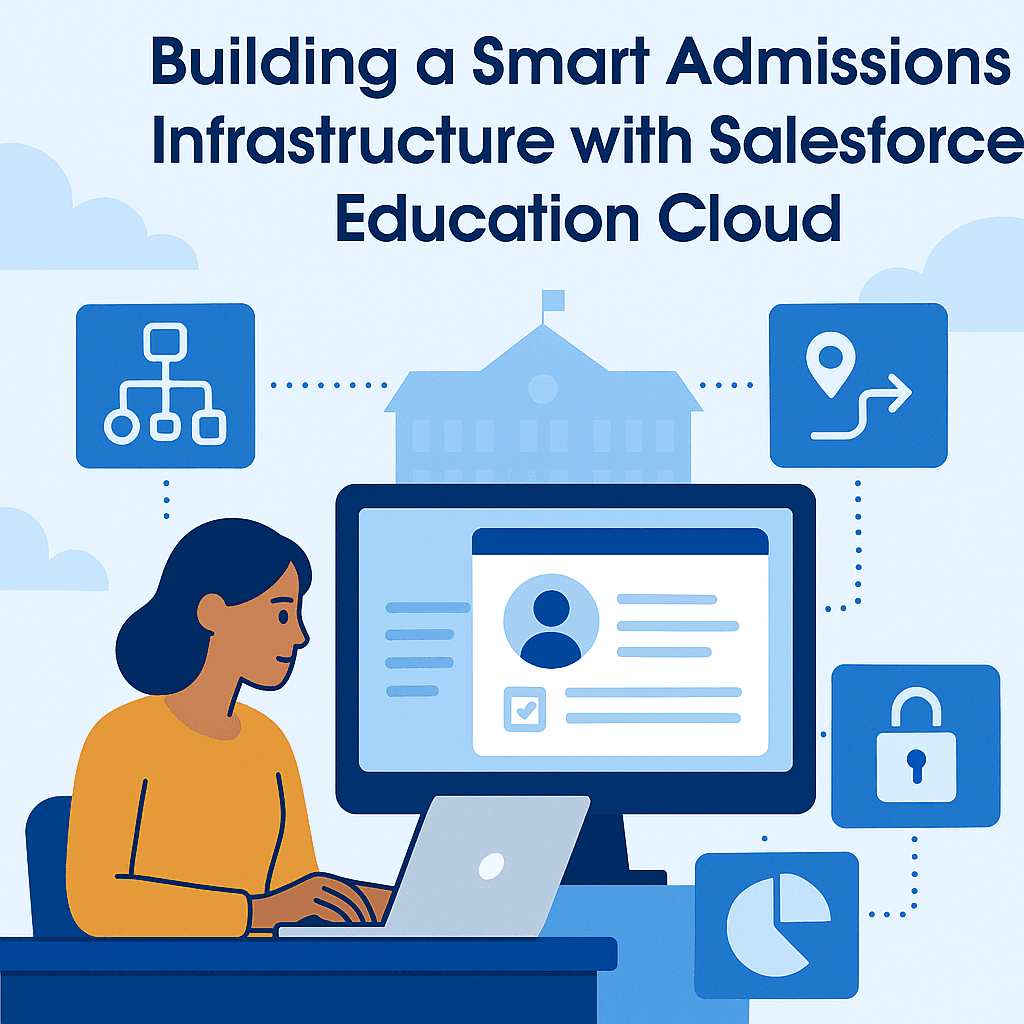Managing student admissions across a widespread, rule intensive educational network is no small feat. Institutions with dozens or even hundreds of campuses often face one central challenge: how do you scale with consistency, transparency, and speed without sacrificing compliance or equity?
For school systems tasked with maintaining nationwide fairness, category-based quotas, or government-mandated guidelines, traditional tools like spreadsheets, semi-automated portals, and offline document tracking create more friction than flow.
Salesforce Education Cloud offers a modernization blueprint that doesn’t just digitize admissions – it transforms the entire operational DNA of institutional management.
Institutional Pain Points: Not Just Admissions, But Governance Gaps
Let’s zoom out and look beyond form submissions.
Most large education networks suffer from:
Fragmented systems: Admissions, student profiles, library systems, and finance don’t talk to each other
Opaque decision logic: Quota compliance, merit order, and waitlist policies are manually managed and hard to audit
Staff dependency: A process break at one regional office halts 100+ downstream applications
Limited scalability: Adding new campuses or categories requires manual process redesign
Poor oversight: HQ leadership lacks real-time data across zones, making decisions reactive, not proactive
Salesforce Education Cloud addresses all of this – not as a form automation tool – but as a platform for operational intelligence.
Platform Thinking: Building a Smart Admissions Infrastructure
Here’s how Salesforce reimagines the full-stack architecture of student admissions and tracking:
1. Composable Admission Workflows
Model admission policies (quota, merit, special categories) into reusable process flows
Regional differences? No problem. Deploy logic variations per campus cluster using flow-based governance
Adjust rules mid-cycle without rewriting code or retraining staff
2. Rule-Driven Application Routing
Auto-assign applications to the most relevant campus based on location, availability, and applicant category
Embed dynamic logic: e.g., “if parent is a government employee and prefers Zone A, prioritize Branch X”
This isn’t workflow automation. It’s real-time decision orchestration.
Data-First Oversight: One Pane of Glass for HQ
Rather than emailing CSVs every week, HQ teams get live dashboards for:
| Metric | Use |
|---|---|
| Quota Utilization (per category, per zone) | Detect overbooking or underutilized seats instantly |
| Application Inflow Heatmaps | Allocate resources to high-demand clusters |
| Verification Queue Health | Intervene where document backlogs threaten SLAs |
| Campus Conversion Rates | Identify where parent drop-offs are happening and why |
It’s not just reporting – it’s operational visibility at scale.
Beyond Admission: Longitudinal Student Intelligence
Once students are admitted, Salesforce doesn’t stop. It supports:
Centralized student identity across transfers, reassignments, or dropouts
Academic performance visibility across schools
Predictive analytics for interventions (low attendance, parent disengagement)
Seamless integration with SIS, transport, ID management, and finance systems
That’s the difference between a “digital form” and a student journey platform.
Data Integrity, Role-Based Access, and Policy Compliance
In government-linked or publicly accountable systems, data governance isn’t optional. Salesforce delivers:
Role-based access per user tier (branch, region, HQ)
Audit logs for every action on every record
Identity masking and consent-based views for sensitive data
Native compliance with data residency and protection mandates
This is enterprise-grade infrastructure built for the education sector.
Digital Transformation That Respects Legacy Realities
Salesforce doesn’t require you to rip and replace your existing systems. It’s integration-ready:
Syncs with legacy portals like e-Counselling or student databases like SAMAGAM
Connects to popular library systems like e-Granthalaya
Uses APIs to push or pull data from ERP, transport, and biometric platforms
This makes it a layered transformation – not a disruptive one.
This Is Not “EdTech.” It’s Infrastructure for Educational Sovereignty.
In high-volume, rule-bound institutions, the future of admissions isn’t about apps and forms. It’s about:
Operational resilience
Policy fidelity
Public trust
Salesforce Education Cloud offers all three – while giving leadership the data to act, not guess.
If you’re managing 10+ campuses, 100,000+ students, or 15+ levels of process complexity – this isn’t a tech upgrade. It’s a control system.




